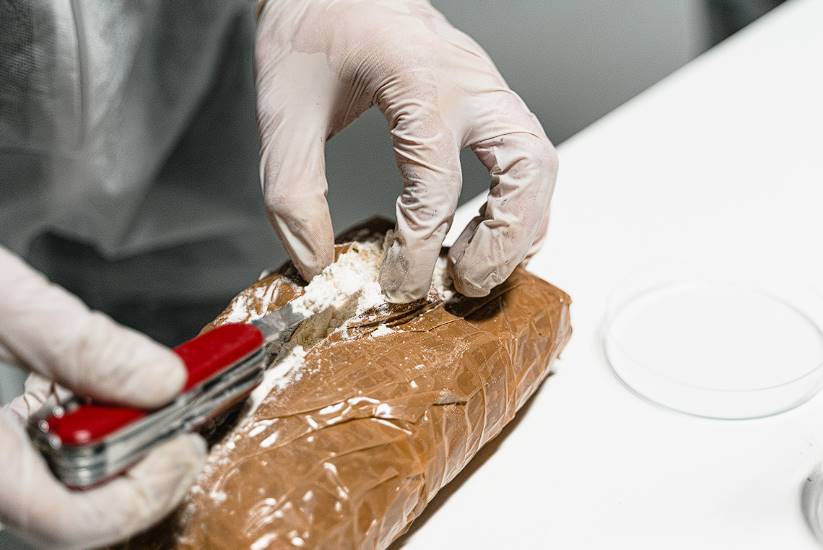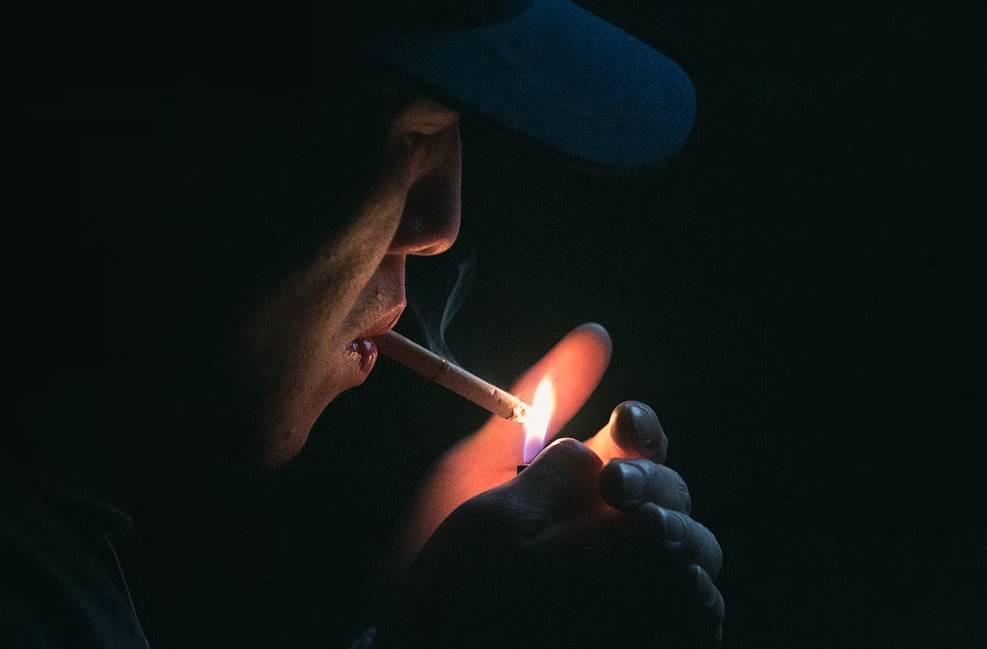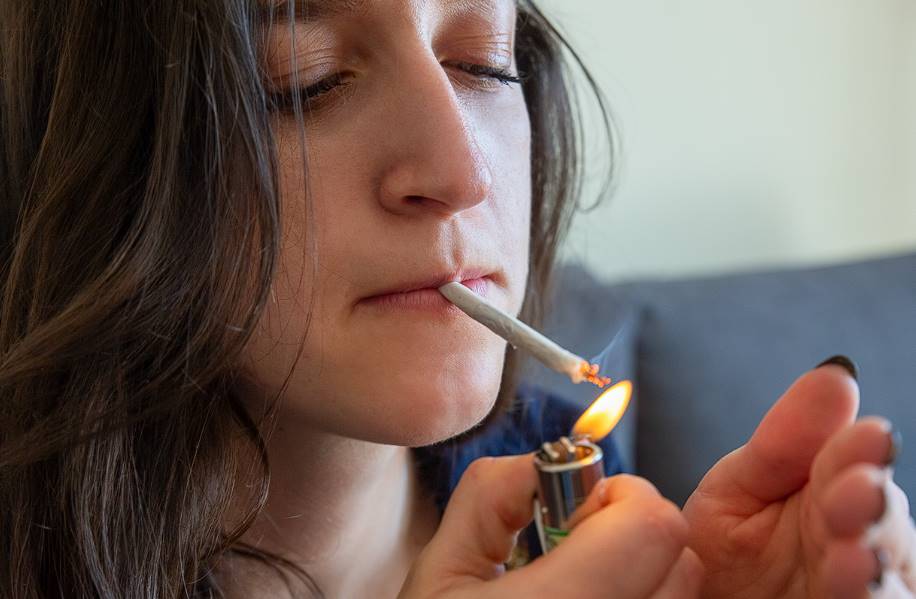Crack cocaine, also called "crack," is a potent and highly addictive subtype of cocaine. It first emerged as a serious societal issue in the 1980s, and its devastation has affected countless individuals, families, and entire communities. This drug is made by transforming cocaine into a crystal form, which is then smoked to produce an intense and immediate high.
Unfortunately, crack addiction can quickly spiral out of control, resulting in serious health consequences, psychological distress, and social disintegration. The crack epidemic increased crime rates and taxed law enforcement resources, emphasising the need for effective addiction treatment and community support programmes.
This blog explores the production of crack cocaine, its impact on the human body and mind, the issues of addiction and reliance, and measures to counteract its usage in society.
How Is Crack Cocaine Made?
Cocaine, a powerful stimulant drug obtained from the coca plant's leaves, is the parent substance of crack cocaine. Cocaine powder is transformed into crack cocaine by mixing it with water and a weak base such as baking soda or ammonia. A solid, crystalline "rock" or "crystal" that can be smoked is formed when this mixture is heated until it evaporates.
The increased effectiveness after conversion increases the drug's popularity and lowers its price, all of which contribute to its widespread use across all socioeconomic groups. Crack cocaine's rising popularity is a major public health problem that necessitates effective addiction treatment due to the drug's easy availability and potent high.
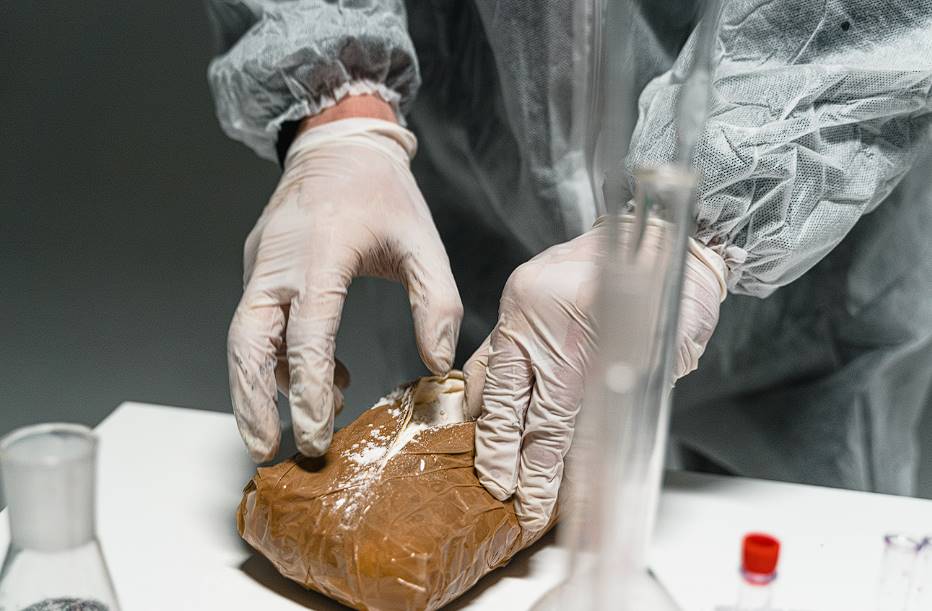
What's The Difference Between Cocaine And Crack?
Cocaine, derived from the dried leaves of the coca plant, is a white powder. Crack is derived from cocaine and manifests as white or tan pellets.
The two substances also differ significantly in several other respects:
- Chemical makeup: Hydrochloride is "freed from the base" during the crack production process to create a rock-like substance.
- Method of use: Crack, on the other hand, is smoked or inhaled rather than ingested or snorted like cocaine or heroin.
Despite these distinctions, however, both substances share the characteristics of being extremely addictive and risky.
Acknowledging The Addiction
The problem of addiction is a challenging and convoluted one that impacts the lives of millions of people all over the world. Confronting addiction requires bravery and a willingness to face the issue head-on, regardless of the compulsive behaviour involved (gambling, substance abuse, or something else).
Recognise The Factors That Can Lead To Drug Addiction.
Keep in mind that the factors that led to cocaine abuse may still be present even after the person has stopped using the drug. It is generally accepted that genetic predisposition and environmental exposures play a role in developing addictive diseases.
- Low socioeconomic status, peer pressure, lower levels of education, and living in areas with high levels of crime and drug use may all increase a person's likelihood of using cocaine. However, white males are more likely to experiment with the drug than any other demographic. Lack of parental supervision, separation and divorce, and intense family conflict are additional risk factors.
- Take every opportunity to learn more about cocaine addiction. This will give you a better idea of how cocaine addiction manifests physically and what treatments are available. To educate oneself regarding the scourge of cocaine abuse. You can learn a lot from Narconon.
Recognise The Symptoms Of Cocaine Addiction.
Some of your loved one's recent actions may have struck you as peculiar. Recognise that a person's out-of-character actions—such as increased excitement, confidence, energy, and talkativeness—may result from cocaine addiction.
- In addition, people who abuse cocaine frequently experience nose bleeds and runny noses, and their pupils become dilated and sensitive to light. Coca use is associated with negative psychological and behavioural effects, including decreased appetite, sadness, anger, apathy, aggression, and hallucinations.
Acknowledge Any Enabling By Family Members.
Consider whether you or those close to you have been enabling the addict in any way. If you bail the person out of jail and drive them to their destination, they can lean on you without having to take any initiative.
- Giving the person money, providing a place to live, and purchasing necessities for them all increases the likelihood that they will spend the money on drugs rather than what they require.
Plan An Intervention For A Family Member Who Is Denying Something.
Collect support from people close to your loved one and tell them they need to get sober. Plan ahead of time, do some research, and figure out what you're going to say in the intervention so that it's effective.
- Give concrete examples of destructive behaviour and its an addict's and their loved ones' toll; lay out a treatment plan with specific steps, guidelines, and end goals; and specify what will happen to each party if the addict refuses help.
How Does Crack Cocaine Addiction Affect You?
The effects of crack addiction on the user and their loved ones can be devastating. Addiction to this potent and destructive drug can quickly take over a person's life, disastrously affecting their health and relationships.
Realising the gravity of crack cocaine addiction and the critical need for immediate medical attention can be greatly aided by an awareness of these consequences.
Physical Effects Of Crack Cocaine Addiction
- Insomnia: The energising effects of crack cocaine can cause sleep patterns to become disrupted, which can eventually lead to chronic insomnia and fatigue.
- Cardiovascular Issues: Crack cocaine use is associated with an increased risk of cardiovascular events like heart attacks and strokes due to the rapid and dramatic rise in heart rate and blood pressure.
- Malnutrition and Weight Loss: Crack cocaine is an extremely potent appetite suppressant, which frequently results in malnutrition, significant weight loss, and a general feeling of weakness.
- Respiratory Problems: Crack smoking can cause irritation and damage to the respiratory system, which can result in persistent coughing, shortness of breath, and even damage to the lungs.
- Dental Problems: Crack cocaine use has been linked to "meth mouth," a collection of dental problems including cavities and gum disease.
Social And Behavioral Effects Of Crack Cocaine Addiction
- Legal Issues: Using illegal drugs can result in serious legal issues, including possible arrest and incarceration in some cases.
- Financial Strain: Addiction to crack cocaine can be extremely costly, as users may put getting high ahead of paying for necessities like food and shelter.
- Loss of Employment: Losing a job is a real possibility for those addicted to crack because of the negative effects on productivity, attendance, and conduct.
- Risk of Injury and Violence: Individuals under the influence of crack cocaine are more likely to engage in risky behaviours, some of which may result in accidents, injuries, or even acts of violence.
- Strained Relationships: Addiction can potentially damage one's social network, including relationships with loved ones.
Psychological Effects Of Crack Cocaine Addiction
- Intense Euphoria and Cravings: Crack cocaine gives users an immediate and intense high, which reinforces their addiction as they continue to seek that high.
- Psychosis: Use of crack cocaine for an extended period of time can, in some people, result in drug-induced psychosis, which is characterised by hallucinations and delusions.
- Paranoia and Aggression: Chronic use of crack cocaine can lead to paranoia, aggressive behaviour, and irritability, all of which make it challenging for users to maintain healthy relationships with others.
- Cognitive Impairment: Addiction to crack cocaine can impede mental capabilities such as memory, focus, and judgement.
- Depression and Anxiety: When the "high" wears off, some people experience intense depression and anxiety, which can lead to a cycle of repeatedly using drugs to alleviate the uncomfortable feelings they are experiencing.
Is It Possible For The Crack To Interact With Other Drugs?
When crack is mixed with other substances or alcohol, it can have devastating effects and cause serious health problems. The drug's euphoric effects may be amplified, but this increases the risk of overdosing.
There are a number of slang terms for cocaine that refer to it in combination with other illegal substances.
- Cocaine with PCP (Whack, Space)
- Cocaine mixed with heroin (Speedball, Bombita, or Belushi)
- Cocaine paste with marijuana (Bazooka)
- Crack cocaine mixed with fentanyl (Takeover or Dirty Fentanyl)
Combinations that are just as risky as these
Alcohol And Crack Cocaine
When you mix crack with alcohol, the effects cancel each other out. This could lead to overdosing if you misjudge your level of intoxication.
When alcohol and cocaine are taken together, the liver produces cocaethylene. This potentially harmful metabolite inhibits dopamine reuptake, leading to elevated states of happiness.
On the other hand, cocaethylene can raise the possibility of:
- Accidental cardiac or cerebrovascular death
- Accidental deaths that happen suddenly
- Fibrosis, liver toxicity, and other liver issues
Marijuana And Crack Cocaine
Chronic use is commonly used to describe the combination of weed and crack. The euphoric effects of these drugs can be amplified by mixing them. Others combine them to counteract the effects of each substance.
The psychoactive effects of marijuana range from stimulating to depressing. But crack is a stimulant, so it's not the same thing. Similar to the effects of other interactions, chronic can cause health problems like:
- Increased heart rate
- Overdose
- Increased blood pressure
Crack Cocaine Addiction Treatment Options
The high relapse rate associated with cocaine use makes it one of the most challenging addictions to treat. Understanding that there is no panacea for treating cocaine dependency is crucial.
Treatment for cocaine addiction is highly nuanced and individualised. You'll need continuous medical monitoring and support after medical detox to stay clean.
Get help immediately from a qualified professional if you or someone you know has a crack addiction. They will be able to recommend treatments tailored to your individual needs.
Crack addiction treatment choices include:
Medical Detox
Addiction treatment begins with medical detox, which aids patients in safely and effectively coping with withdrawal symptoms.
An evaluation of the patient is the first step in a medical detox programme, which also features supervision, the administration of medications, and counselling sessions.
Teens needing medical detox are provided individualised care, including monitoring, medication, a secure environment, psychotherapy, and drug education.
In cases where withdrawal symptoms are severe, medical detox is recommended because it lessens the likelihood of relapse.
Alcohol and opioid addictions can benefit from medication-assisted treatment (MAT), which can lessen withdrawal symptoms and improve the likelihood of sustained abstinence.
Motivational Interviewing
As a highly effective therapeutic strategy, motivational interviewing (MI) is typically used at the commencement of care to help patients overcome their apprehension about making positive lifestyle changes, such as quitting drugs. Individuals can learn to make decisions with the help of their therapists and MI.
These therapists act as sympathetic listeners, promoting introspection that helps patients identify discrepancies between their stated values and actions.
Exposing this discrepancy through MI helps people feel more confident in themselves and more optimistic about the future. This patient-focused method takes a cooperative and non-confrontational tack, with the central goal of fostering a sense of confidence in one's abilities and a desire to take charge of one's own life.
Medication-Assisted Treatment (MAT)
Substance abuse disorders can be treated with a medication and behavioural therapy combination called Medication-Assisted Treatment.
A variety of substance use disorders can be treated with MAT, including opioid use disorder, alcohol use disorder, and tobacco use.
Medications used in MAT include methadone, naltrexone, anticonvulsants, buprenorphine, disulfiram, acamprosate, naloxone, antipsychotics, beta-blockers, and clonidine.
Community Reinforcement
The community reinforcement approach (CRA) is a form of outpatient behavioural therapy. The goal is to make sobriety more desirable than drug or alcohol abuse through material incentives and social, occupational, and recreational reinforcements.
Throughout treatment, you will participate in a series of one-on-one counselling sessions aimed at helping you:
- Practising skills that will help you avoid relapse if you ever try to quit using crack cocaine or any other substance.
- Strengthen ties with one's immediate family.
- Create a supportive sober friend network.
- Make a group of sober friends who can help and support you.
- Get job skills or improve them.
Outpatient Treatment For Addiction
Addiction can be overcome through outpatient treatment, which allows patients to continue living at home while receiving therapy.
Partial hospitalisation and intensive outpatient programmes are two examples of outpatient treatment options.
Cognitive-Behavioural Therapy, Motivational Interviewing, Contingency Management, and Intensive Family Systemic Therapy are commonly used in outpatient programmes.
Outpatient programmes offer a combination of intensive outpatient programmes (IOPs) and inpatient treatment, which enables patients to maintain a certain level of autonomy while also receiving professional medical support.
Inpatient Treatment For Addiction
Inpatient treatment takes place in a hospital and provides patients with round-the-clock access to medical, psychological, and addiction services.
Inpatient treatment is an option for those who require extensive assistance for a substance use disorder and would benefit from having round-the-clock medical supervision.
Medical evaluation and detoxification are the first steps in inpatient treatment, followed by various therapies and activities designed to alleviate withdrawal symptoms and teach patients how to maintain sobriety once they leave the facility.
Inpatient treatment allows patients to put their Recovery first by removing them from potential triggers and stresses of daily life.
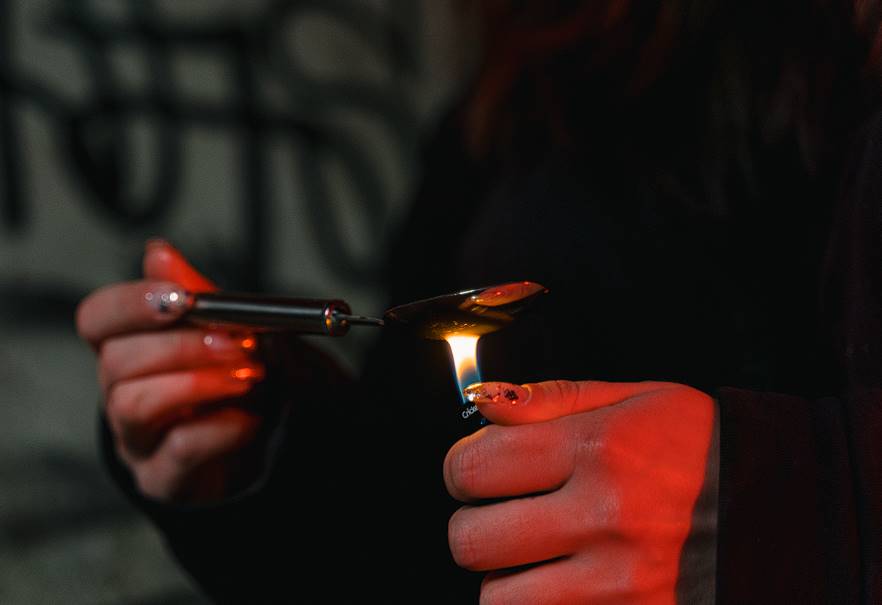
Addiction Support Groups
Alcoholics Anonymous (AA) and other 12-step programmes, which emphasise peer support and self-improvement, are integral components of many addiction treatment plans.
Recovering individuals can learn new coping mechanisms, manage cravings, and make meaningful connections through attending support groups.
Twelve-step programmes, which emphasise community building and mutual aid, are widely recognised as effective treatment methods for substance abuse.
The 12-step programmes Al-Anon, Nar-Anon, and Alateen are all centred on helping families and friends of alcoholics and drug addicts.
SMART Recovery is a non-relapse programme that emphasises sobriety and provides its members with tools for moving on to a more fulfilling life.
Cognitive Behavioral Therapy (CBT)
Cognitive behavioural therapy (CBT), a common form of behavioural therapy for the treatment of other substance use disorders, is effective in the treatment of crack cocaine addiction as well. Maintaining sobriety is the end goal of cognitive behavioural therapy (CBT). This is achieved by means of:
- Predicting and preparing for potentially dangerous events.
- Developing effective coping mechanisms.
- Analysing the potential benefits and drawbacks of both maintaining and abandoning crack use.
- Monitoring your cravings.
- Recognising how different people in the armed forces may have different ways of thinking about the sacrament of confession.
Addiction And Mental Health Treatment
People who have problems with addiction frequently also have problems with their mental health.
The mental health disorder may cause the addiction, or the addiction may exacerbate the mental health disorder.
It is ineffective and potentially dangerous to treat addiction without treating the underlying mental health disorder.
Conclusion
Crack cocaine, a potent and highly addictive subtype of cocaine, emerged as a serious societal issue in the 1980s. It is made by transforming cocaine into a crystal form, which is then smoked to produce an intense and immediate high.
Crack addiction can quickly spiral out of control, resulting in serious health consequences, psychological distress, and social disintegration. The crack epidemic increased crime rates and taxed law enforcement resources, emphasizing the need for effective addiction treatment and community support programs.
Cocaine is derived from the dried leaves of the coca plant, while crack is derived from cocaine and manifests as white or tan pellets. Both substances share the characteristics of being extremely addictive and risky.
To confront addiction, it is crucial to recognize the factors that can lead to drug abuse, such as genetic predisposition and environmental exposures.
Low socioeconomic status, peer pressure, lower levels of education, and living in areas with high levels of crime and drug use may increase a person's likelihood of using cocaine. White males are more likely to experiment with the drug than any other demographic.
To recognize the symptoms of cocaine addiction, it is essential to recognize out-of-character actions, such as increased excitement, confidence, energy, and talkativeness, as well as negative psychological and behavioral effects.
Acknowledge any enabling by family members, such as bailing out the person or providing a place to live, as this increases the likelihood of spending money on drugs rather than what is needed.
Plan an intervention for a family member who is denying something by collecting support, researching, and laying out a treatment plan with specific steps, guidelines, and end goals.
Crack cocaine addiction has severe physical, psychological, and social effects on users and their loved ones. It can cause disrupted sleep patterns, cardiovascular issues, malnutrition, weight loss, respiratory problems, and dental problems. Crack cocaine can also lead to financial strain, job loss, injury and violence, and damaged relationships.
Psychological effects of crack cocaine include intense euphoria, cravings, psychosis, paranoia, aggression, cognitive impairment, and depression. When mixed with other substances, the effects cancel each other out, increasing the risk of overdosing.
Alcohol and crack cocaine can cancel each other out, leading to overdosing if misjudged. Cocaethylene, a potentially harmful metabolite, can inhibit dopamine reuptake, leading to elevated states of happiness.
Marijuana and crack cocaine can also cause health problems like increased heart rate, overdose, and blood pressure. Treatment options for cocaine addiction are highly nuanced and individualized, with continuous medical monitoring and support after detox. Seeking help from a qualified professional can help recommend tailored treatments tailored to individual needs.
Addiction treatment begins with medical detox, which helps patients safely and effectively cope with withdrawal symptoms. This includes evaluation, supervision, medication administration, and counseling sessions. Medication-assisted treatment (MAT) is recommended for severe withdrawal symptoms and improved abstinence.
Motivational interviewing (MI) is an effective therapeutic strategy to help patients overcome apprehension about making positive lifestyle changes. Community reinforcement (CRA) is an outpatient behavioral therapy that aims to make sobriety more desirable than drug or alcohol abuse.
Outpatient treatment options include partial hospitalization and intensive outpatient programs, which include Cognitive-Behavioural Therapy, Motivational Interviewing, Contingency Management, and Intensive Family Systemic Therapy.
Inpatient treatment takes place in a hospital and provides round-the-clock access to medical, psychological, and addiction services. Inpatient treatment allows patients to put their recovery first by removing them from potential triggers and stresses of daily life.
Addiction support groups, such as Alcoholics Anonymous (AA), 12-step programs, and 12-step programs like Al-Anon, Nar-Anon, and Alateen, are integral components of many addiction treatment plans.
Cognitive behavioral therapy (CBT) is effective in treating crack cocaine addiction by predicting and preparing for dangerous events, developing effective coping mechanisms, analyzing the benefits and drawbacks of maintaining and abandoning crack use, monitoring cravings, and recognizing different perspectives on confession.
Addiction and mental health treatment are essential components of addiction treatment. It is ineffective and potentially dangerous to treat addiction without treating the underlying mental health disorder.
Content Summary:
- Crack cocaine, also called "crack," is a potent and highly addictive subtype of cocaine.
- It first emerged as a serious societal issue in the 1980s, and its devastation has affected countless individuals, families, and entire communities.
- This drug is made by transforming cocaine into a crystal form, which is then smoked to produce an intense and immediate high.
- Unfortunately, crack addiction can quickly spiral out of control, resulting in serious health consequences, psychological distress, and social disintegration.
- The crack epidemic increased crime rates and taxed law enforcement resources, emphasising the need for effective addiction treatment and community support programmes.
- This blog explores the production of crack cocaine, its impact on the human body and mind, the issues of addiction and reliance, and measures to counteract its usage in society.
- Crack cocaine's rising popularity is a major public health problem that necessitates effective addiction treatment due to the drug's easy availability and potent high.
- Despite these distinctions, however, both substances share the characteristics of being extremely addictive and risky.
- The problem of addiction is a challenging and convoluted one that impacts the lives of millions of people all over the world.
- Keep in mind that the factors that led to cocaine abuse may still be present even after the person has stopped using the drug.
- Take every opportunity to learn more about cocaine addiction.
- To educate oneself regarding the scourge of cocaine abuse.
- Recognise that a person's out-of-character actions—such as increased excitement, confidence, energy, and talkativeness—may result from cocaine addiction.
- Consider whether you or those close to you have been enabling the addict in any way.
- Give concrete examples of destructive behaviour and its an addict's and their loved ones' toll; lay out a treatment plan with specific steps, guidelines, and end goals; and specify what will happen to each party if the addict refuses help.
- Addiction to this potent and destructive drug can quickly take over a person's life, disastrously affecting their health and relationships.
- Realising the gravity of crack cocaine addiction and the critical need for immediate medical attention can be greatly aided by an awareness of these consequences.
- The energising effects of crack cocaine can cause sleep patterns to become disrupted, which can eventually lead to chronic insomnia and fatigue.
- Psychosis: Use of crack cocaine for an extended period of time can, in some people, result in drug-induced psychosis, which is characterised by hallucinations and delusions.
- Paranoia and Aggression: Chronic use of crack cocaine can lead to paranoia, aggressive behaviour, and irritability, all of which make it challenging for users to maintain healthy relationships with others.
- Depression and Anxiety: When the "high" wears off, some people experience intense depression and anxiety, which can lead to a cycle of repeatedly using drugs to alleviate the uncomfortable feelings they are experiencing.
- When crack is mixed with other substances or alcohol, it can have devastating effects and cause serious health problems.
- There are a number of slang terms for cocaine that refer to it in combination with other illegal substances.
- When alcohol and cocaine are taken together, the liver produces cocaethylene.
- The euphoric effects of these drugs can be amplified by mixing them.
- Others combine them to counteract the effects of each substance.
- But crack is a stimulant, so it's not the same thing.
- Understanding that there is no panacea for treating cocaine dependency is crucial.
- Treatment for cocaine addiction is highly nuanced and individualised.
- An evaluation of the patient is the first step in a medical detox programme, which also features supervision, the administration of medications, and counselling sessions.
- Teens needing medical detox are provided individualised care, including monitoring, medication, a secure environment, psychotherapy, and drug education.
- In cases where withdrawal symptoms are severe, medical detox is recommended because it lessens the likelihood of relapse.
- Alcohol and opioid addictions can benefit from medication-assisted treatment (MAT), which can lessen withdrawal symptoms and improve the likelihood of sustained abstinence.
- Substance abuse disorders can be treated with a medication and behavioural therapy combination called Medication-Assisted Treatment.
- Strengthen ties with one's immediate family.
- Outpatient programmes offer a combination of intensive outpatient programmes (IOPs) and inpatient treatment, which enables patients to maintain a certain level of autonomy while also receiving professional medical support.
- Inpatient treatment takes place in a hospital and provides patients with round-the-clock access to medical, psychological, and addiction services.
- Inpatient treatment is an option for those who require extensive assistance for a substance use disorder and would benefit from having round-the-clock medical supervision.
- Cognitive behavioural therapy (CBT), a common form of behavioural therapy for the treatment of other substance use disorders, is effective in the treatment of crack cocaine addiction as well.
- Maintaining sobriety is the end goal of cognitive behavioural therapy (CBT).
- Recognising how different people in the armed forces may have different ways of thinking about the sacrament of confession.
Frequently Asked Questions
Crack cocaine's rapid onset of intense euphoria creates a powerful psychological and physical dependence, driving individuals to use the drug compulsively.
Yes, with appropriate and comprehensive treatment, many individuals can recover from crack cocaine addiction and lead fulfilling lives in recovery.
Both crack cocaine and powdered cocaine originate from the coca plant. However, crack cocaine is produced by mixing powdered cocaine with baking soda or ammonia, resulting in small rocks that are smoked for immediate effects.
In contrast, powdered cocaine is commonly snorted, providing a different method of consumption and varying intensity of the drug's impact.
Employing prevention strategies can notably decrease the occurrence of crack cocaine addiction. However, it requires a comprehensive and multifaceted approach to tackle the intricate factors contributing to drug abuse. Combining education, community outreach, and support services can effectively combat the spread of this destructive addiction.
Crack cocaine use can lead to various harmful effects, including heart palpitations, breathing difficulties, feelings of paranoia, and aggressive behaviours. These adverse outcomes significantly increase the risk of injuries and potentially fatal overdoses, making crack cocaine a dangerous and life-threatening substance to abuse.
